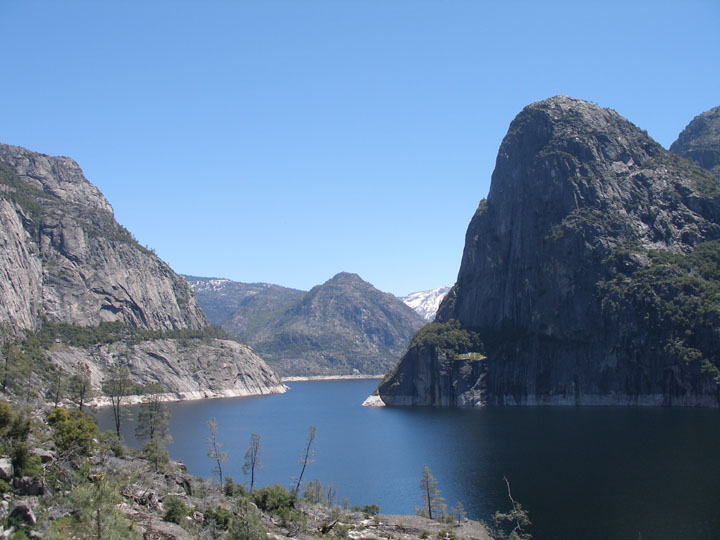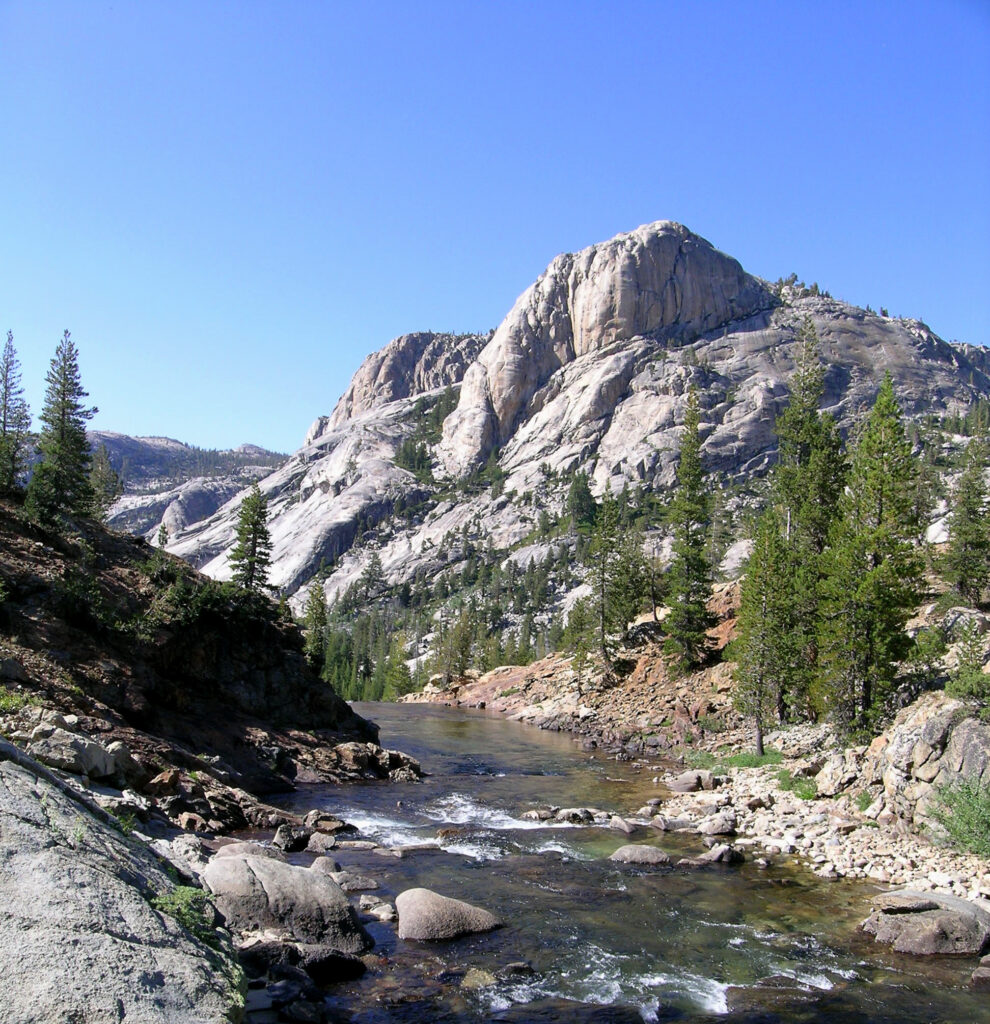Peter Drekmeier has good news to share about San Francisco. Despite climate change, megafires, and a state-wide drought, the city can expect its Hetch Hetchy water system, 85% of our water supply, to keep us flush with water for the foreseeable future.
The catch? You’ve got to use his organization’s numbers, not the forecast of the agency in charge, namely the San Francisco Public Utilities Commission, or SFPUC.
“The big story is how dishonest the SFPUC is with their numbers,” Drekmeier, Policy Director of the Tuolumne River Trust, said. Drekmeier argues that San Francisco could release more water from its Hetch Hetchy supply into the Tuolumne River, helping the fish and the ecosystem, without worrying about running out of water.

“And releasing this water into the environment would help the salmon. As a ‘green’ city, San Francisco should be interested in that,” he said.
The main snafu, according to Drekmeier, is that SFPUC is basing the city’s water needs on holding enough water for a “designed drought” scenario of an eight-year megadrought, coupled with a forecast of a high-end daily water use in the Hetch Hetchy service area of 265 million gallons per day. Currently, demand is under 200 million gallons of water per day, and has actually decreased over the past three decades.
But if Drekmeier is wrong, and future droughts are worse than he predicts, the city will have serious problems, the SFPUC says.
“We understand that they claim our design drought is too conservative,” John Cote, communications director for the San Francisco Public Utilities Commission told us. According to Cote, the vast majority of that long-term planning amount “is a contractual obligation to our wholesale customers.”
Cote said the agency’s planning scenario was based on sound science and decades of experience in water resources management. He noted that, given global climate change, future droughts should be more frequent, and the time between them shorter. That will mean our water system will have less time to recover.
And while releasing more water from Hetch Hetchy may help struggling fish populations, if there’s not enough rain to replenish it, the residents of the city will pay the price.
The SFPUC has been focused on conservation and reuse of water, highlighted by the Fall 2022 opening of its $216 million Westside Enhanced Water Recycling Project, which will provide 1.6 million gallons a day of irrigation water to Golden Gate Park, Lincoln Park and the Presidio. In addition to desalination and water recycling, SFPUC is exploring new technologies such as their Atmospheric Water Generation pilot program.
The larger context of this latest chapter in California’s water wars is a complex memorandum of understanding signed by Governor Newson on April 1 that strives—again—to find a balance between human and natural ecosystem water needs.
The Tuolumne River Trust supports a policy of leaving 40 percent of the Tuolumne’s natural flow in the river, which was adopted by the State Water Board in 2018. The SFPUC and BAWSCA (Bay Area Supply and Conservation Agency) have blocked this plan with lawsuits.
The Board of Supes passed a resolution opposing the SFPUC lawsuit, which Mayor London Breed vetoed.
Drekmeier said he understands how precious water is, but he said that the fear of climate change could make people—and even agencies—hoard more than they need. He likened the fear to a driver with three-quarters of a tank of gas desperate to find a gas station; the fear of having no gas blinds the driver to the fact of having enough gas.

He’s asked the SFPUC to release the records that show how the agency reached its conclusions about a future drought. We asked, too, and Cote told us:
We don’t view this in terms of the odds. We view the design drought as a stress test on the system that we need to be prepared for because the consequences are so dire. We’re not going to gamble with the water supply for nearly 3 million Bay Area residents and businesses. We are seeing more and more events that have a theoretical chance of happening once in a hundred years or longer, and in the U.S. we’ve experienced these more than once in 10 years. We need to be prepared.
But that doesn’t answer the question of what data the SFPUC used and how it interpreted that data—including projections on climate change, precipitation, etc.
Drekmeier filed a request under the Sunshine Ordinance for
the numbers used by the SFPUC to calculate the potential impacts of the [Clean Water Act Section 401 Water Quality Certification] on the SFPUC’s water supply. Per the California Public Records Act and San Francisco’s Sunshine Ordinance, I again request all documents produced or used by the SFPUC to determine the rationing figures of 75% to 90% cited in CCSF’s Petition for Reconsideration.
The SFPUC’s response: No. All those documents are covered by attorney-client privilege (presumably because they are part of the lawsuit).
Drekmeier said the good intentions of San Franciscans are being flushed to sea. When San Franciscans put in native gardens or turn off their showers to soap up, they probably believe that saved water is being released into the environment.
Instead, it’s walled off behind dams, only to be released when threatened by a flood to make room for more run-off.
“In 2017, the reservoirs were all full, and then all that water had to be released in a single season. The Tuolumne experienced one great year at the expense of many terrible years,” he said.
Drekmeier has been to many SFPUC meetings and acknowledges there are good people working there. One of the barriers to transparency and real dialogue about these numbers, he believes, is the bureaucracy of the SFPUC, which Drekmeier compares unfavorably to East Bay MUD.
“SFPUC is very different than East Bay MUD where the directors are elected. Issues at SFPUC stall out and drag on because the commission doesn’t have the pressure to initiate things.”
It’s the complex nature of our sprawling water system that Bay Area reporter and National Geographic explorer Erica Gies takes on in her new book, Water Always Wins. How dams meet human needs – but at the expense of the needs of nature – is a view she shares with Dreckmeier.
“Typically dams release water on a human schedule and not on a wildlife schedule,” Gies said. “Most rivers have higher and lower flows, as well as colder and warmer water, to trigger different parts of critters’ life cycles.”
And this act of creating dams and moving water from its ancient routes creates “water haves and have nots,” according to Gies. She cites a study in Nature that found that over a 40-year period, 20 percent of people in the world have gained water from interventions like dams, but 24 percent had lost water over that same period, creating an environmental justice issue.
Nothing changes this fact: San Francisco has a lot of people and a poor local water supply. However, just as our attitude towards fire has to change, Gies said she believes we all need a refresher course in water, particularly our obsession with getting problematic water—like problematic fire—out of sight and out of mind.
“So much of what we have done is to rush water off of the land,” Gies said. “We pave over everything in cities, forcing water down storm drains and out to sea. We’re throwing away the rain we’re getting.”
The title of Gies book suggests the ultimate outcome of such a combative stance with water. A more pragmatic approach for San Francisco, an approach Gies describes as a “slow water” approach, is to create bioswales and more permeable spaces like parks to allow whatever water San Francisco does get to slow down and stay around longer, opening up possibilities for our use or even re-use. And understanding “what water wants” will help us understand our own city that much better, Gies argues.
“Water always wins means that water tends to go where it used to go,” Gies said. “So if your home is built on filled-in wetlands, like parts of San Francisco, water will still want to go there.”
Gies praises the “Hidden Nature SF” project led by the San Francisco Estuary that uses maps and historical documents to recreate what San Francisco looked like before the Spanish arrived and began the massive transformation of the landscape we live in today. By understanding what water wants, according to Gies, San Francisco could daylight buried creeks safely and approach city planning with nature as a partner rather than as an antagonist.
What’s clear is that having more respect than the pennies on the dollar we pay in water “value”—in relation to the return value of our very existence—is needed, especially with one more IPCC report determining that our attitudes towards “everything will need to change: energy, buildings, transport, food and industry.”
And Drekmeier would like San Franciscans to go a step further than simply reusing Hetch Hetchy water for irrigation in local parks.
“The Tuolomne is the worst off of all the Central Valley rivers in terms of salmon spawning,” Drekmeier said. “The historic count of salmon averages around 100,000. Last year the count was 578. And 100 other species in that ecosystem depend on the keystone species of salmon.”
And, according to Drekmeier, some of those dead salmon lay at the feet of the City of St. Francis.



